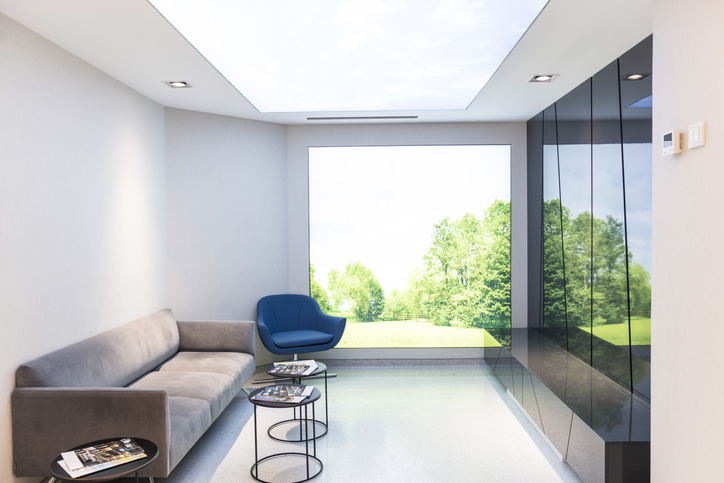ダーマペンは、美肌を目指す多くの人々に支持されている施術ですが、施術直後の肌は非常に敏感で、特別なケアが必要です。正しいケアを行うことで、ダーマペンの効果を最大限に引き出し、健康的な美肌を維持することができます。ここでは、ダーマペン直後の肌状態から、注意すべきポイント、効果的なケア方法までを専門的に解説し、理想的な肌を手に入れるためのヒントを提供します。

国立熊本大学医学部を卒業。国内大手美容クリニックなどで院長を歴任し、2023年アラジン美容クリニックを開院。長年の実績とエイジングケア研究で博士号取得の美容医療のプロ。「嘘のない美容医療の実現へ」をモットーに、患者様とともに「オンリーワン」を目指す。
ダーマペン施術直後の肌の一般的な状態

ダーマペン施術は、肌の奥深くに微細な傷をつけることで、コラーゲン生成を促し、肌の再生を図る治療法です。この治療法は、美肌効果が期待できる一方で、施術直後の肌には特有の反応が見られます。ここでは、ダーマペン施術直後の肌の一般的な状態をさらに詳しく解説します。
赤みと腫れの発生
施術直後、肌には強い赤みが生じることが一般的です。これは、微細な針が肌に無数の小さな傷をつけることで、肌が炎症反応を起こし、血流が増加するためです。赤みは、肌の防御反応として現れるものであり、これにより肌の再生プロセスが開始されます。
赤みの程度は個人差があり、特に敏感肌の方や、初めてダーマペンを受ける方は、赤みが強く現れることがあるでしょう。この赤みは通常、施術後数時間から数日以内に徐々に引いていきますが、完全に消えるまでには数日を要する場合もあります。
同時に、腫れが見られることもあります。腫れは、肌が微細な傷に対して炎症反応を示し、皮膚組織が一時的に膨張するために起こります。特に目の周りや頬など、皮膚が薄い部分では腫れが目立ちやすいです。腫れの程度も個人差があり、通常は施術後1~2日で軽減していきますが、稀に数日間続くこともあります。
乾燥と肌のつっぱり感
ダーマペン施術後、肌は乾燥しやすくなります。これは、肌のバリア機能が一時的に低下し、水分が蒸発しやすくなるためです。乾燥によるつっぱり感やかさつきは、施術後数時間から数日間続くことがあります。
この時期には、適切な保湿ケアが非常に重要です。肌が乾燥していると、かゆみを感じることもあり、無意識に肌を掻いてしまうことがあるため、保湿を十分に行うことでこれを防ぐ必要があります。
また、肌がつっぱったような感覚が残ることもあります。これは、皮膚が一時的に緊張しているために起こるもので、肌の再生過程の一環と考えられます。このつっぱり感は、通常、肌が回復していくにつれて自然に消えていきますが、これも適切な保湿と鎮静ケアを行うことで緩和することができます。
炎症性色素沈着のリスク
赤みや腫れに加えて、ダーマペン施術直後の肌は炎症性色素沈着を引き起こすリスクもあります。特に、強い赤みが長時間続く場合や、施術後の日焼け対策が不十分な場合、メラニンの生成が促進され、色素沈着が発生する可能性があります。
これを防ぐためには、施術後すぐに紫外線を避けることが重要です。また、炎症を抑えるための冷却や抗炎症作用のあるスキンケア製品の使用も効果的です。
ダーマペン施術直後の回復過程での肌の変化

ダーマペン施術後の肌は、数日から数週間にわたって回復の過程を経ます。このプロセスは、肌が新しい細胞を生成し、コラーゲンの産生を促進するために非常に重要です。ここでは、回復過程での肌の変化をより詳しく解説します。
施術直後から1日目:赤みと腫れの残存
ダーマペン施術直後から1日目にかけて、肌は非常に敏感な状態にあります。この時期の肌は、微細な針によってできた無数の小さな傷によって赤みと腫れが残っています。これらの症状は、炎症反応として肌が自然に示すもので、コラーゲン生成が開始される合図でもあります。
肌は外部からの刺激に対して特に敏感になっており、触れるだけで痛みを感じることもあります。そのため、この時期にはできるだけ肌に触れず、冷却と鎮静ケアを行うことが推奨されます。また、施術当日は特に紫外線を避け、直射日光を浴びないようにすることが非常に重要です。
2日目から3日目:赤みの軽減と乾燥の進行
施術から2日目以降、赤みは徐々に引き始めます。肌の表面にある炎症が少しずつ落ち着くことで、赤みが薄くなり、肌が元の色合いを取り戻しつつあります。しかし、この時期に新たに乾燥感が強まることが多く、肌がつっぱったり、かさつきを感じることがあります。
これは、肌のバリア機能が一時的に低下しており、水分が蒸発しやすくなっているためです。この乾燥感に対処するためには、保湿が非常に重要となります。特に、ヒアルロン酸やセラミドを含む保湿製品を使用することで、肌の水分保持力を高めることができます。
また、一部の人は、この時期にかゆみを感じることがあります。これは、肌が新しい細胞を生成し、再生プロセスが進行しているサインです。しかし、かゆみを感じても肌を掻くことは避けるべきです。掻くことで、傷が開いたり、炎症が悪化したりするリスクがあるため、保湿を徹底し、冷却や鎮静効果のある製品を使用することが望ましいです。
4日目から5日目:肌の落ち着きとリジュビネーション効果の現れ
施術から4日目以降になると、肌の状態は徐々に落ち着き始めます。赤みや腫れがほぼ引き、乾燥感も和らいでいきます。この段階で、肌の質感が改善されることを感じる方が多いです。
毛穴が引き締まり、肌が滑らかになり、ハリが増してきます。これが、ダーマペンのリジュビネーション効果の現れです。肌の再生プロセスが本格的に進行し、新しいコラーゲンやエラスチンが生成されることで、肌の弾力が増し、全体的な質感が向上します。
この時期には、肌の回復を助けるためのスキンケアが重要です。特に、ビタミンCを含む美容液やアンチエイジング効果のあるクリームを使用することで、コラーゲンの生成をさらに促進することができます。また、紫外線対策は引き続き重要です。肌が回復している最中に紫外線を浴びると、色素沈着が起こるリスクが高まるため、日焼け止めの使用は必須です。
7日目以降:最終的な回復と長期的な効果
施術から1週間が経過する頃には、肌はほぼ完全に回復し、ダーマペンの効果がしっかりと感じられるようになります。赤みや腫れは完全に引き、肌が均一で滑らかな質感を取り戻します。
毛穴が引き締まり、シミやくすみが薄くなり、全体的に明るく健康的な肌トーンが実現します。また、肌の弾力が増し、ハリのある若々しい肌が実感できるでしょう。
この時期以降も、ダーマペンの効果は徐々に現れ続けます。複数回の施術を行うことで、さらに効果が強化され、シワやシミ、ニキビ跡などの改善が期待できます。長期的に美肌を維持するためには、継続的なスキンケアが欠かせません。特に、日々の保湿ケアと紫外線対策を怠らず、定期的にダーマペンや他の美容施術を受けることで、健康で美しい肌を維持することが可能です。
ダーマペン直後のケア方法とは?美肌を保つための適切なアフターケア

ダーマペン施術後のケアは、施術の効果を最大限に引き出し、肌の回復をサポートするために非常に重要です。特に、施術直後の24時間は、肌が非常にデリケートな状態にあるため、適切なケアを行うことが求められます。ここでは、ダーマペン直後の具体的なケア方法について詳しく解説します。
最初の24時間のケアが大事!炎症を抑える方法
ダーマペン施術後の最初の24時間は、肌の回復を促進するために特に重要な期間です。この時期のケアは、肌が炎症を起こしやすい状態であるため、冷やしたりと鎮静が基本となります。
まず、施術直後には、肌を冷やすためのアイテムを使用して肌を冷やすことが推奨されます。血管が収縮し、赤みや腫れを抑える効果が期待できます。冷やすときは直接肌に負担をかけないよう、布で包んだアイスパックや専用のジェルパックを使用し、肌に優しく行うことが大切です。
次に、抗炎症作用のあるスキンケア製品を使用することが効果的です。アロエベラやカモミールエキスを含むジェルやスプレーは、肌を鎮静させる効果があり、炎症を軽減する助けとなります。また、炎症を抑えるために、できるだけ触れないことが重要です。肌が敏感な状態にあるため、無理に触れたり、強くこすったりすることは避けましょう。
ワセリンの使用とその効果
ダーマペン施術後のケアにおいて、ワセリンは非常に有効なアイテムです。ワセリンは、肌のバリア機能をサポートし、水分の蒸発を防ぐ効果があります。施術直後の肌はバリア機能が低下しており、外部からの刺激に非常に敏感になっています。そのため、ワセリンを使用することで、肌表面に保護膜を作り、外的刺激から守ることができます。
また、ワセリンは非常に保湿力が高く、乾燥を防ぐのにも効果的です。乾燥は肌の回復を遅らせる要因となるため、ワセリンを薄く均一に塗布することで、肌をしっかりと保護しながら、適切な潤いを保つことができます。ただし、ワセリンは非常に厚く塗ると肌の呼吸を妨げることがあるため、使用量には注意が必要です。
適切な保湿方法と推奨される保湿製品
ダーマペン施術後の肌は乾燥しやすいため、適切な保湿が重要です。保湿は、肌のバリア機能を回復させ、施術後の乾燥やかゆみを防ぐために不可欠です。保湿ケアを行う際には、以下のポイントを押さえておくことが大切です。
まず、保湿剤は低刺激で、無香料・無添加のものを選ぶことが推奨されます。ヒアルロン酸やセラミド、グリセリンなど、保湿効果が高い成分を含む製品が最適です。これらの成分は、肌の角質層に浸透し、水分を保持する役割を果たします。
保湿ケアは、まず肌を冷却した後に行うのが効果的です。冷却で肌を落ち着かせた後、化粧水で肌を整え、その後に保湿クリームやジェルを塗布します。化粧水は、コットンではなく手で優しく押し込むようにして使用することで、肌に余計な刺激を与えずに済みます。
また、施術後の肌は紫外線に対して非常に敏感な状態にあるため、日中は日焼け止めを使用することが不可欠です。日焼け止めは、SPF30以上で、できるだけ刺激の少ないものを選ぶようにしましょう。紫外線は肌の炎症を悪化させ、色素沈着を引き起こすリスクがあるため、外出時は帽子やサングラスを併用するなど、紫外線対策を徹底することが重要です。
ダーマペン直後の注意点!美肌を守るための重要なポイント

ダーマペン施術直後の肌は非常にデリケートで、正しいケアを行うだけでなく、避けるべき行動や製品についても十分に理解しておく必要があります。このセクションでは、ダーマペン直後に気をつけるべき注意点を詳しく解説します。
避けるべき行動3つ!
ダーマペン施術直後は、肌が非常に敏感な状態にあるため、通常では問題ない行動や製品が、肌に悪影響を与える可能性があります。施術後数日間は、強い化粧品やピーリング剤、スクラブなどの使用を避けましょう。
これらの製品は肌に刺激を与え、炎症を悪化させる可能性があります。特に、アルコールを含む化粧品や香料が強い製品は、避けるべきです。ダーマペン直後は、肌に優しい低刺激のスキンケア製品を選ぶことが大切です。
また、施術直後の肌は紫外線に対して非常に敏感です。紫外線を浴びると、炎症性色素沈着のリスクが高まり、シミやくすみが残る可能性があります。そのため、外出時には日焼け止めを必ず使用し、帽子やサングラスで物理的に紫外線を遮ることも重要です。また、できるだけ日中の外出を控え、紫外線の強い時間帯は避けるようにしましょう。
その他、ダーマペン施術後は、激しい運動やサウナ、ホットヨガなどの体温が上がる行動は避けるべきです。これらの行動は、体温上昇によって血流が促進され、赤みや腫れが悪化する可能性があります。また、汗をかくことで、肌に細菌が付着しやすくなり、感染症のリスクが高まるため、運動後すぐにシャワーを浴びることも重要です。
スキンケアやメイクでの注意点
ダーマペン施術後の洗顔やメイクにも、特別な注意が必要です。施術直後の12〜24時間は、洗顔とメイクを控えることが推奨されます。これは、施術直後の肌が非常にデリケートであり、洗顔時の摩擦や使用する水が肌に刺激を与える可能性があるためです。
その後、初めて洗顔を行う際には、ぬるま湯で優しく洗い流すようにしましょう。強い摩擦を避けるために、泡立てネットを使って泡を十分に作り、その泡で優しく洗顔するのがベストです。
施術後のメイク再開は、少なくとも24時間は控えることが推奨されます。特にファンデーションやコンシーラーなどの肌に密着するメイク製品は、毛穴を塞いでしまう可能性があるため、肌の回復を妨げる原因となることがあります。
具体的な再開のタイミングは、個人の肌の回復速度にもよりますが、赤みや腫れが引き、肌が落ち着いてきた時点が目安となります。もし施術後に外出の予定がある場合は、軽い保湿クリームや色付きの日焼け止めなど、肌に負担をかけない製品を使用することが良いでしょう。
ダーマペンの代わりとなる施術は?肌の悩みに応じた選択肢

ダーマペンは、肌の再生を促し、シワやシミ、ニキビ跡の改善に効果的な施術ですが、他にも同様の効果を持つ代替施術がいくつか存在します。施術の目的や肌の状態に応じて、ダーマペンの代わりとなるこれらの施術を検討することができます。
フラクショナルレーザー
フラクショナルレーザーは、肌に微細な熱エネルギーを与えることで、コラーゲンの生成を促進し、肌の再生を助ける治療法です。この施術は、肌のハリを改善し、シワやシミ、ニキビ跡の改善に効果的です。
フラクショナルレーザーは、肌の表面にダメージを与えることなく、深部に働きかけるため、ダーマペンと同様に肌のリジュビネーションを目指す方に適しています。
また、フラクショナルレーザーは、肌の色むらやテクスチャーの改善にも効果があり、特に日焼けによるダメージを受けた肌におすすめです。この施術は、ダーマペンよりもリカバリータイムが短い場合が多く、忙しい方にも適しています。
マイクロニードリングRF
マイクロニードリングRFは、ダーマペンと似た施術ですが、微細な針とともに高周波(RF)を利用して肌にアプローチします。高周波の熱エネルギーが真皮層に直接作用し、コラーゲンやエラスチンの生成を促進します。この施術は、特に深いシワや肌のたるみ、毛穴の開きに効果的です。
マイクロニードリングRFは、ダーマペンよりも効果が高いとされており、即効性を求める方や、より深い肌の再生を目指す方に適しています。また、皮膚表面のダメージが少ないため、回復が早いのも特徴です。
ケミカルピーリング
ケミカルピーリングは、酸を使用して肌の表面の古い角質を取り除き、肌の再生を促す施術です。ケミカルピーリングは、ダーマペンと異なり、主に肌の表面に働きかけるため、くすみやニキビ、軽度のシミの改善に適しています。
ケミカルピーリングは、肌のターンオーバーを正常化し、明るく健康的な肌を目指す方におすすめです。また、ダーマペンと組み合わせて使用することで、より効果的な美肌効果を得ることができます。例えば、ケミカルピーリングで肌の表面を整えた後にダーマペンを施すことで、成分の浸透が良くなり、相乗効果が期待できます。
ヒアルロン酸注射
ヒアルロン酸注射は、肌に直接ヒアルロン酸を注入することで、シワやたるみを改善し、肌にハリと潤いを与える施術です。特に目の下のクマやほうれい線など、局所的なボリュームロスを補うのに適しています。
ヒアルロン酸注射は、即効性があり、施術後すぐに効果が実感できる点が魅力です。また、自然な仕上がりを求める方や、特定の部位に集中して改善を図りたい方におすすめです。ダーマペンと併用することで、全体的な肌の質感改善と局所的なボリュームアップを同時に達成することができます。
まとめ
ダーマペン直後の適切なケアを理解し実践することで、施術の効果をしっかりと引き出し、美肌を維持することができます。注意点を守り、効果的なスキンケアを続けることで、理想的な肌を手に入れましょう。独断せずにカウンセリングなどで医師のアドバイスを参考にしながら、安心してダーマペンを受け、美肌を目指す旅を楽しんでください。
アラジン美容クリニックでは、美容医療および美容皮膚における長年の経験や博士号を持つ知見より、出逢う皆様のお一人ひとりに最適な施術を提供する「オンリーワン」を目指すカウンセリングを実施し、余計な情報や提案をせず、「ウソのない」美容医療で、必要な施術のみをご提案しております。
LINE公式アカウントにて、お気軽に24時間カウンセリングや予約を受付しております。無料カウンセリングで初めての方やお悩みの方はぜひ一度ご相談くださいませ。






